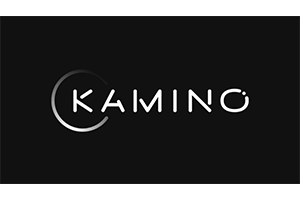撰文:Patrick Bush
原文:《Top 5 Builders Driving Solana’s Dominance》
Please note that VanEck may have a position(s) in the digital asset(s) described below.
Key Takeaways:
- Solana drives meaningful onchain trading activity with $1.4T in decentralized exchange (DEX) volume and $4.5T in stablecoin transfers YTD.
- Creator-coin platforms are generating significant revenue, with pump.fun nearing $900M lifetime and hitting a $6M fee day.
- Distribution fuels usage, with Phantom’s 3M monthly average users (MAUs) executing over 200M swaps worth $38B YTD.
Solana’s commitment to being at the apex of blockchain network design is converting many crypto software developers into Solana evangelists. This is important because these builders are creating applications hosted on Solana that will drive revenues to the Solana network and its stakers. The most important catalysts of Solana’s activity are front‑of‑house applications such as decentralized exchanges (DEXes), creator‑coin rails, wallets, Decentralized Physical Infrastructure Networks (DePIN), and non‑custodial derivatives. To facilitate these applications, Solana offers a network that settles transactions quickly and cheaply. Most importantly, Solana hosts a strong community of well-capitalized, intrepid supporters who will use novel applications.
In this piece, we highlight 5 builders adding meaningful value to Solana: Pump.fun, Phantom, Helium, Drift, and Ellipsis Labs.
1) pump.fun: The Creator‑Coin Factory (and New User Funnel)

What it does: Provides a simple framework for non-technical users to launch tokens instantly.
Why it matters for Solana: Pump.fun consumes significant Solana blockspace by generating new assets that drive trading activity. At peak, pump.fun assets accounted for more than 90% of all Solana trading volume and delivered millions of dollars per day in revenue to Solana stakers.
Monetization and mechanics: The platform charges ~1.25% on swaps for a token until that token reaches a defined market cap threshold. As a token grows, the associated fees step down.
Moat and competition: Pump.fun’s primary moat is network effects from being first to market. Additionally, its developer team churns out products people want to use because they are easy and addictive. Long-term, Pump must retain creators and users while keeping an eye on competitor fees.
Key risks: The main risk is that competing platforms could design more appealing speculative experiences that capture Pump’s core user base. There is also ongoing criticism that Pump’s trading mechanics create a zero-sum environment where most users lose money. If this perception persists, users could migrate to speculative platforms they view as fairer.
Pump.fun's Revenue is Highly Volatile

Source: Token Terminal as of 11/11/2025. Past performance is no guarantee of future results. Not intended as a recommendation to buy or sell any securities named herein.
KPIs to watch: Daily fees, weekly share vs. peers, graduation rates to DEXs, median and mean holder dispersion.
Catalysts (3–6 months): Moderation and product updates, fee adjustments, wallets and social media integrations, competitive responses.
2) Phantom: The Consumer Gateway

What it does: Phantom is a self-custody wallet with built-in applications such as token swaps, prediction markets, and NFT trading. It also provides important safety features that protect user funds from malicious transactions and user mistakes. It can be thought of as a browser for onchain users, and users often stick to the first wallet they adopt. Engagement is also high with >12 opens per day. Phantom generates revenue when users perform actions within the “walled garden” applications it offers within the wallet.
Why it matters for Solana: Phantom is the most important entry-level user interface for new Solana users. It removes friction, simplifies application discovery, and helps curious users convert into active participants across Solana’s ecosystem.
Moat and roadmap: Phantom has a strong brand that is deeply embedded into Solana and serves as the first touchpoint for many users. Phantom is also expanding its presence to other blockchains like Sui and Ethereum. Going forward, the roadmap includes more embedded applications, such as payments and identity, which may enable the trading of restricted assets.
Phantom Earns Revenue Through Embedded Apps

Source: Dune as of 11/11/2025. Past performance is no guarantee of future results. Not intended as a recommendation to buy or sell any securities named herein.
KPIs to watch: MAUs, swap volumes, share of Actions and Blinks usage, fraud‑loss rates, and fiat on‑ramp conversion.
Catalysts (3–6 months): Actions and Blinks distribution, identity, and embedded payments, and changes in app‑store policy.
3) Helium: DePIN at Solana Scale

What it does: Helium operates decentralized wireless networks and is currently focused on 5G cellular service. The Helium community migrated to Solana in 2023 and minted nearly 1M hotspot NFTs using Solana’s state compression technology, which reduces storage costs and enables fast credentialing at scale.
Why it matters for Solana: Helium proves that Solana can serve as the leading home for large-scale Decentralized Physical Infrastructure Networks (DePIN). Helium’s migration showed that Solana can support millions of device credentials at low cost while also connecting to Solana’s broader defi ecosystem for payments, liquidity, and incentive mechanisms.
Architecture and economics: Helium demonstrates that real-world businesses can use Solana’s blockchain as backend infrastructure. Helium earns >$1.5M per month in revenue and has grown +700% YoY.
Helium Networks Revenues +700% YoY

Source: Dune as of 11/11/2025. Past performance is no guarantee of future results. Not intended as a recommendation to buy or sell any securities named herein.
KPIs to watch: Revenues, 5G radios, network utilization (data throughput), mobile subs, payout economics, and geographic distribution.
Catalysts (3–6 months): Mobile Virtual Network Operator (MVNO) and enterprise partnerships, new hardware, and tokenomics updates.
4) Jupiter: Solana’s Trading Epicenter

What it does: Jupiter is Solana’s primary venue for onchain trading across both perpetual futures (perps) and spot crypto tokens. Traders can use leverage and place directional bets or even provide liquidity to other speculators to earn fees. Amongst Solana perps DEXes, Jupiter is the most widely used exchange. For spot trading, Jupiter is classified as an aggregator DEX which means that Jupiter pings prices and liquidity simultaneously across many different DEXes to give traders the best pricing.
Scale and economics: Over the last 30 days, Jupiter Perps processed $17.4B in notional volume and generated $954M in annualized fees to take $238M in annualized revenues. On the spot side, Jupiter remains the dominant Solana DEX aggregator by volume/share and Jupiter has processed $716B in token volumes in 2025.
Why it matters for Solana: Perps are crypto’s most used trading instrument by dollar value. Delivering perps trading on chain provides Solana with a large user base that will perform lots of transactions to drive revenues to Solana.
Moat and competition: Jupiter benefits from deep routing network effects in spot trading, as it integrates with the most important decentralized exchanges. Additionally, Jupiter has a proven risk engine that has effectively handled liquidations through many turbulent market conditions. Competition includes centralized venues such as Binance and Coinbase, other Solana perps peers like Drift and Zeta. Additionally, there are many competing aggregators on Solana, such as Rubic and KyberSwap.
Jupiter Grows Platform Revenues +295% YoY

Source: Artemis XYZ as of 11/11/2025. Past performance is no guarantee of future results. Not intended as a recommendation to buy or sell any securities named herein.
KPIs to watch: Trading volumes, Open interest, taker/maker fees and rebates, funding behavior relative to CEXs, market‑impact costs.
Catalysts (3–6 months): New listings, cross‑margin and portfolio margin refinements, integrations with new tokenized assets, and the growth of proprietary liquidity pools.
5) Kamino Finance: Solana’s Decentralized Prime Broker

What it does: Kamino is Solana’s most important hub for borrowing and lending digital assets. It serves as a central venue where users supply assets to earn yield, while traders and market makers borrow assets to take leveraged positions or access liquidity without swapping their holdings. Risk management is automated at the protocol level, allowing Kamino to serve as Solana’s primary source of secure, programmatic liquidity.
Scale and economics: As of November 2025, Kamino retains ~$2.74B in deposits on Solana and ~$1.36B in outstanding borrows. Its central importance in Solana’s financial ecosystem has allowed it to earn $95M in 2025. Kamino has various risk mechanisms to ensure that the collateral underpinning loans does not violate risk parameters and cost LPs losses.
Why it matters for Solana: Kamino provides the deep liquidity that powers market making, leverage, and active trading across Solana. It acts as the core funding market that enables the broader Solana financial ecosystem to function efficiently.
Moat and competition: Kamino benefits from strong network effects driven by deep liquidity, consistent usage, and a long track record without security incidents. Its risk engine has earned significant trust by protecting LPs during volatile market periods. Competing platforms include Solend and MarginFi.
Kamino Earned More Than $95 Million YTD 2025

Source: Artemis XYZ as of 11/11/2025. Past performance is no guarantee of future results. Not intended as a recommendation to buy or sell any securities named herein.
KPIs to watch: Borrow and lend rates, net TVL, borrow amounts, new tokens onboarded, new liquidity pools, new lending strategies, broader Solana DEX volumes, and onchain yields.
Catalysts (3–6 months): New cross‑margin partnerships, trading expansion, new asset listings, RWAs, and new products.
Catalysts to Watch (2025–2026)
- Launchpad competition and fee structures, plus how pump.fun users graduate into deeper DEX liquidity; moderation and compliance practices will shape sustainability.
- Broader client diversity and performance improvements on Solana through Firedancer and Agave clients, along with UX improvements such as actions and blinks.
- Growth or contraction in Solana’s stablecoin supply, which serves as a real-time signal of liquidity demand for trading.
- New RWAs, tokenized equities, and other tokenized assets that can increase transaction flow and expand Solana’s trading universe.
Risks and How This List Could Change
- Data integrity: Wash trading (DEXes) and bot‑driven token factories (launchpads) can distort metrics, triangulate dashboards, and haircut headline figures.
- Regulation: Evolving frameworks for prediction markets and creator‑coins, plus wallet and app‑store policies, can shift access quickly.
- Market structure: Fee compression, incentive fatigue, or network incidents that can reshuffle competitive positioning on short notice.
- Competition: Rapid emergence of new applications or token formats that attract speculative flow away from today’s leaders.
- MEV changes : New MEV protections on Solana may redirect user activity toward.
To receive more Digital Assets insights, sign up in our subscription center .
免责声明:本文章仅代表作者个人观点,不代表本平台的立场和观点。本文章仅供信息分享,不构成对任何人的任何投资建议。用户与作者之间的任何争议,与本平台无关。如网页中刊载的文章或图片涉及侵权,请提供相关的权利证明和身份证明发送邮件到support@aicoin.com,本平台相关工作人员将会进行核查。




